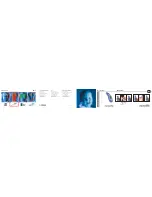
11
-- All surfaces requiring lubrication should be reachable
where manual lubrication is involved. (Tight component
fits mean that high application pressure is required. A
high-pressure grease gun should therefore be used if
necessary).
-- Grease is best distributed for internal moving compo-
nents during manual lubrication by running on the end
positions several times, lubricating them again and then
checking the clamping force.
-- Lubricating impulses should ideally occur while the clam-
ping medium is in the open phase for the best lubricant
distribution results during central lubrication.
Clamping force should be checked with a clamping force
measuring instrument prior to recommencing serial work
and between service intervals. ”Regular checking is the
only guarantee for optimum safety”.
It is advantageous to run on several times the end posi-
tions of internal moving components after 500 clamping
operations at the latest. (Lubricant which has been pres-
sed out is reapplied to the pressure surfaces as a result.
The clamping force is maintained for a longer period of
time as a consequence).
13. Collision
Before the clamping medium can be used again after a
collision, it must be subjected to a specialist and qualified
crack test.
14. Replacing slot nuts
Slot nuts used for connecting top jaws to basic jaws should
only be replaced with ORIGINAL RÖHM slot nuts.
III. Environmental hazards
Different lubricating, cooling and other media are required
when operating a clamping fixture. These are generally
applied to the clamping medium via the distributor casing.
The most frequently encountered of such media are
hydraulic oil, lubricating oil/grease and coolant. Careful
attention must be paid to these substances when handling
the clamping medium to prevent them penetrating the soil
or contaminating water. Danger! Environmental hazard!
This applies in particular
-- during assembly / dismantling, as residual quantities of
such substances are still present in lines, piston
chambers and oil bleeding screws,
-- to porous, defective or incorrectly-fitted seals,
-- to lubricants which, due to design-related reasons,
emerge from or spin out of the clamping medium
during operation.
These emerging substances should therefore be collected and
reused (or disposed of in accordance with applicable regula-
tions)!
IV. Technical safety requirements relating to
force-actuated clamping fixtures
1. The machine spindle should only be started after clamping
pressure has built up in the clamping cylinder and clamping
has been achieved within the permitted working range.
2. Clamping should only be relieved when the machine
spindle is stationary. An exception is permitted if loading /
unloading is intended during the entire procedure and if the
design of the distributor / cylinder permits this.
3. A signal should shut down the machine spindle immedia-
tely if the clamping energy fails.
4. The workpiece should remain securely clamped until the
spindle is stationary in the event of the clamping energy
failing.
5. An alteration of the current position should not be possible
in the event of an electric power failure and re-activation.
Safety instructions and guidelines for the use of power-operated clamping devices
Wrong
Right
Projecting length of mounted
workpiece too great
relative to chucked length
Support workpiece between
centres or using a stady
Chucking diameter
too great
Use a larger chuck
Workpiece too heavy,
chucking step too short
Support
between cen-
tres,
extend
chucking
step
Chucking diameter too
small
Workpiece has a casting
or forging-related taper
Chuck using self-aligning
inserts
Chuck using greatest possible
chucking diameter
14598-k001-001 18.09.2003 11:03 Uhr Seite 11
Содержание KFD-HS
Страница 29: ...I 15 VDE 0113 12 73 7 1 3 II 1 R HM 2 3 4 6 2 e EN 1550 DIN ISO 1940 5 VDI 3106 RUSS 29...
Страница 32: ...32 IV 1 2 3 4 5 e p o pa o...
Страница 33: ...33...
Страница 34: ...34...












































